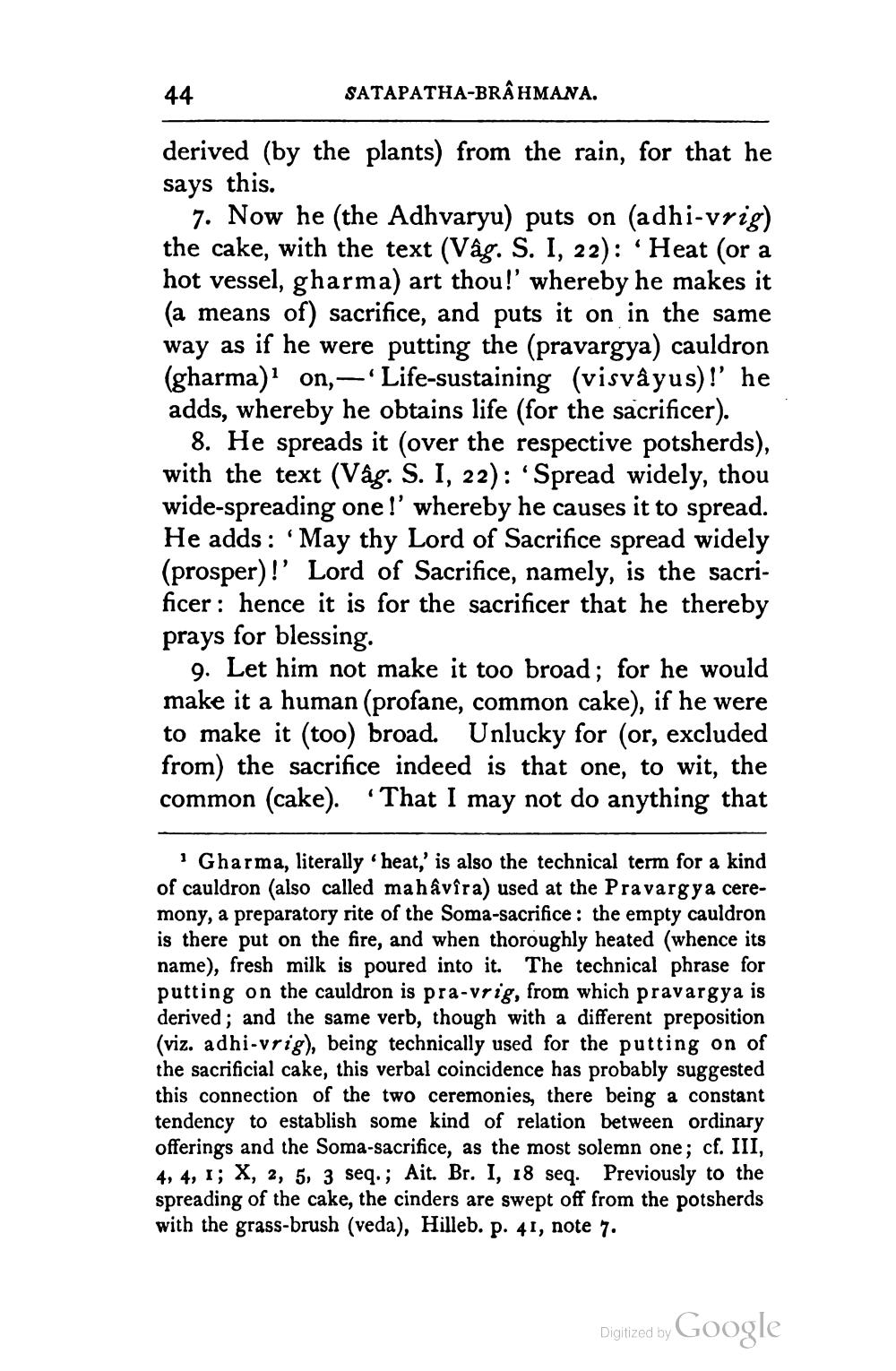________________
44
SATAPATHA-BRAHMANA.
derived (by the plants) from the rain, for that he says this.
7. Now he (the Adhvaryu) puts on (adhi-vrig) the cake, with the text (Vâg. S. I, 22): 'Heat (or a hot vessel, gharma) art thou!' whereby he makes it (a means of) sacrifice, and puts it on in the same way as if he were putting the (pravargya) cauldron (gharma)? on,—Life-sustaining (visvå yus)!' he adds, whereby he obtains life (for the sacrificer).
8. He spreads it (over the respective potsherds), with the text (Vág. S. I, 22): Spread widely, thou wide-spreading one!' whereby he causes it to spread. He adds: 'May thy Lord of Sacrifice spread widely (prosper)!' Lord of Sacrifice, namely, is the sacrificer : hence it is for the sacrificer that he thereby prays for blessing.
9. Let him not make it too broad; for he would make it a human (profane, common cake), if he were to make it (too) broad. Unlucky for (or, excluded from) the sacrifice indeed is that one, to wit, the common (cake). “That I may not do anything that
Gharma, literally heat,' is also the technical term for a kind of cauldron (also called mahâvîra) used at the Pravargya ceremony, a preparatory rite of the Soma-sacrifice : the empty cauldron is there put on the fire, and when thoroughly heated (whence its name), fresh milk is poured into it. The technical phrase for putting on the cauldron is pra-vrig, from which pravargya is derived; and the same verb, though with a different preposition (viz. adhi-vrig), being technically used for the putting on of the sacrificial cake, this verbal coincidence has probably suggested this connection of the two ceremonies, there being a constant tendency to establish some kind of relation between ordinary offerings and the Soma-sacrifice, as the most solemn one; cf. III, 4, 4, 1; X, 2, 5, 3 seq.; Ait. Br. I, 18 seq. Previously to the spreading of the cake, the cinders are swept off from the potsherds with the grass-brush (veda), Hilleb. p. 41, note 7.
Digitized by Google




